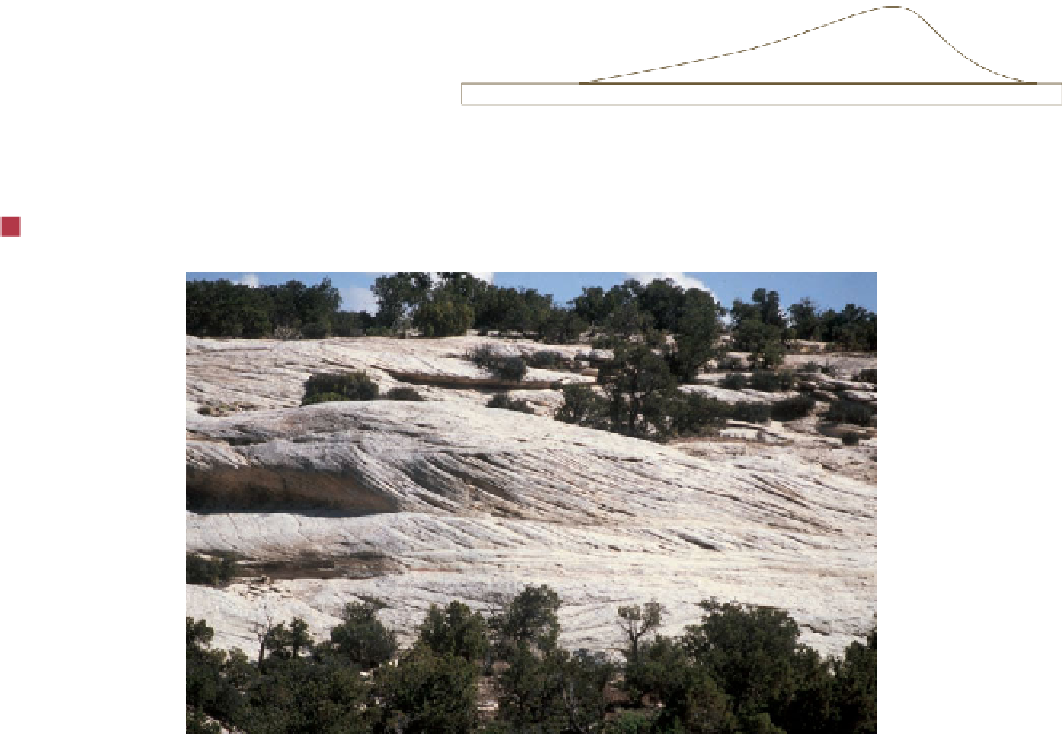Geology Reference
In-Depth Information
◗
Figure 6.23
Bedding (Stratifi cation) and Cross Bedding
Wind or
current direction
Deposition
b
Origin of cross-bedding by deposition on the sloping surface of a desert
dune. Cross-bedding is also common in dunelike structures in stream and river
channels.
a
Bedding or stratifi cation is obvious in these
alternating layers of sandstone and mudrock (shale).
c
Cross-bedding in sandstone at Natural Bridges National Monument in Utah. The current
moved from left to right.
◗
Figure 6.24
Turbidity Currents and the Origin of Graded Bedding
As turbidity
current slows, the
largest particles
settle, followed
by smaller
particles
Seafloor
A gradedbed
b
The fl ow slows and deposits progressively smaller particles, thus
forming a graded bed.
a
A turbidity current fl ows downslope along the seafl oor (or a lake
bottom) because it is denser than sediment-free water.
It is true that the remains of land-dwelling creatures and
plants can be washed into marine environments, but most are
preserved in rocks deposited on land or perhaps transitional
environments such as deltas. In contrast, fossils of corals tell
us that the rocks in which they are preserved were deposited
in the ocean.























































































































































































































































































Search WWH ::

Custom Search